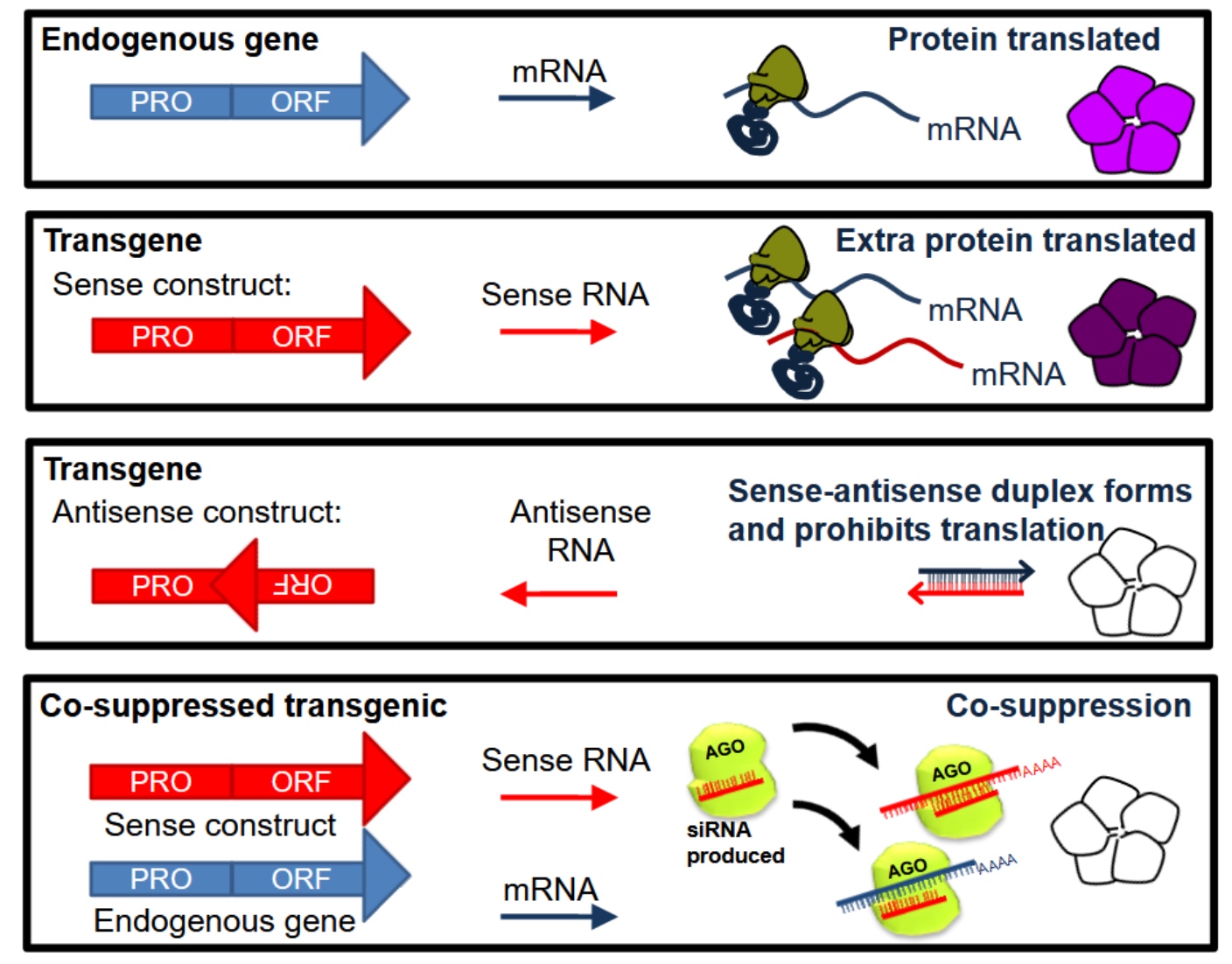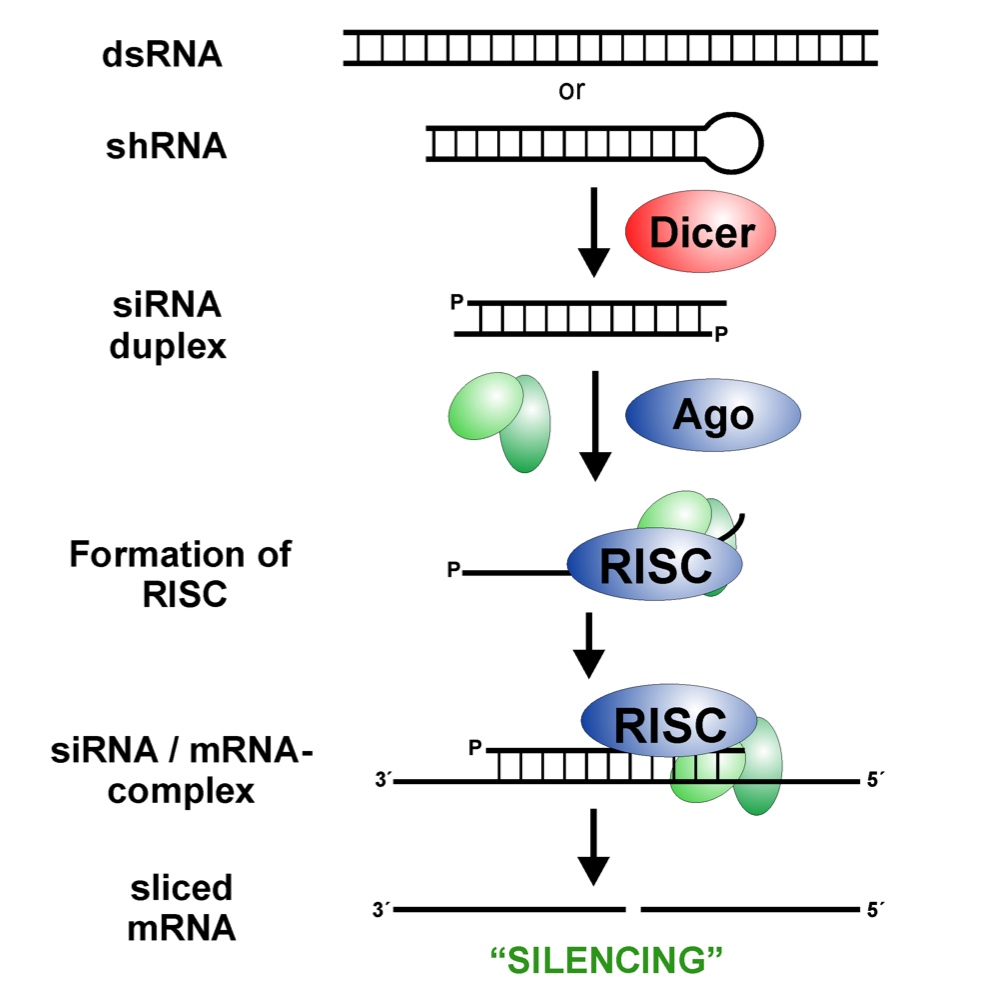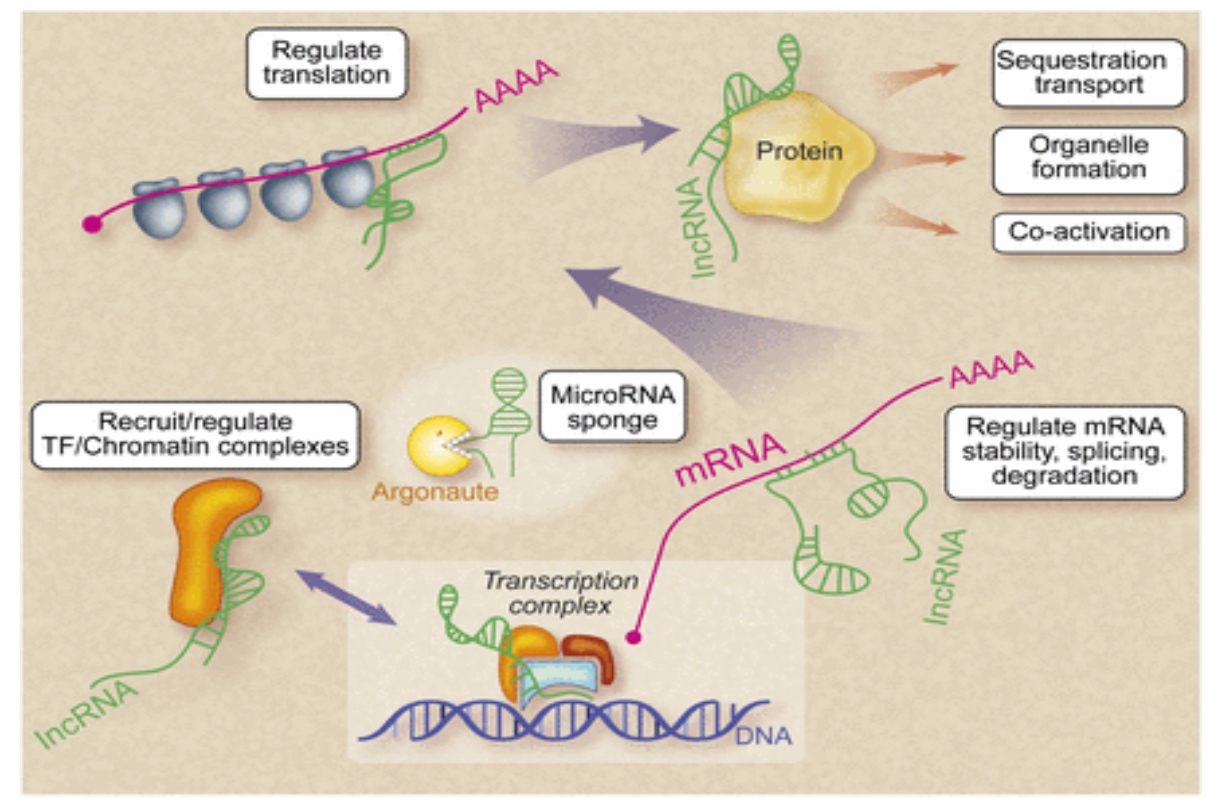Consider this real-world scenario:
You are working in a nursery, trying to create petunias with a deep, violet pigment. You reason that you could do this by inserting multiple copies of the gene responsible for violet pigment (chalcone synthase) into the genome of the petunia.
But when you try to do this, you find that many flowers aren’t fully violet, but rather light lavender/white in intriguing patterns.

Sense RNA is what Robinson hope to have. But to some reason, some antisense comes up and mix with sense RNA, which inhibits the translation.
Also, the small interference RNA produced.

RNA Interference
shRNA: short hairpin RNA

Micro RNAs are Endogenous Genes that Regulae Gene Expression
- Near-perfect complementary --> degradation
- Partial Complementarity --> translation repressed
What are long, non-coding RNAs (lncRNAs)?
- RNAs longer than 200 nucleotides that do not have protein-coding potential - They perform many regulatory functions in cells

This paper ties together many of the concepts that we’ve been discussing throughout the course:
- DNA damage and repair, NHEJ and HR
- control of the cell cycle following DNA damage - p53 (tumor suppressor gene)
- PARP
- DNA-protein interactions
- lots of techniques (TALENs, CRISPR-Cas9, RNA-Seq, ChIP, qRT-PCR, mass spectrometry
SPARCLE expresses in a very low level.
miR-34b/c --> SPARCLE --> p53R2
First 24 hours, cells try to do repairs. Then use SPARCLE to do apoptisis.
